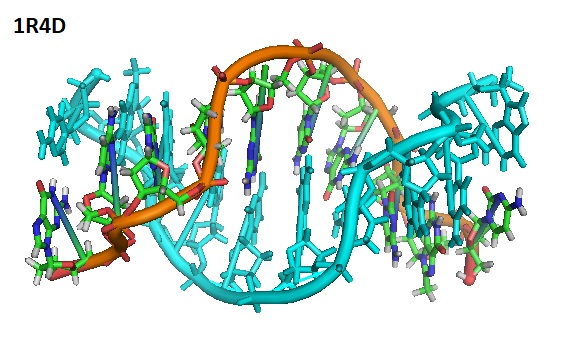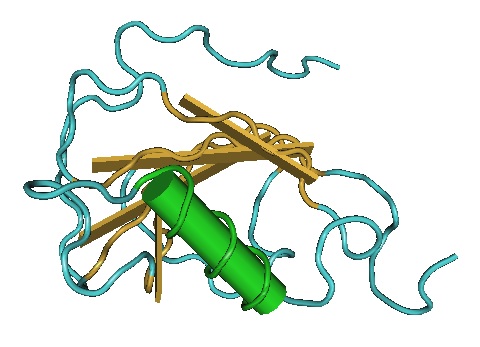|
|
|
Bio-Synthesis Newsletter - April 2019
|
Humans take their microbes into space
 A recent study sampled the microbe diversity that is able to survive in the International Space Station (ISS). The study revealed that humans take their microbes with them into space. Molecular and culture-based methods allowed the assessment of microbial communities on ISS surfaces. Bacterial and fungal DNA was detected using qPCR and amplicon sequencing. The study revealed a diverse population of bacteria and fungi on ISS environmental surfaces and the dominant organisms were associated with the human microbiome. A recent study sampled the microbe diversity that is able to survive in the International Space Station (ISS). The study revealed that humans take their microbes with them into space. Molecular and culture-based methods allowed the assessment of microbial communities on ISS surfaces. Bacterial and fungal DNA was detected using qPCR and amplicon sequencing. The study revealed a diverse population of bacteria and fungi on ISS environmental surfaces and the dominant organisms were associated with the human microbiome. |
|
L-DNA based nucleic acid probes
 L-DNA is a mirror-image form of the naturally occurring d-conformation of DNA. L-DNA forms a left-helical double-helix but has similar physical characteristics in regards to solubility, duplex stability, and selectivity as D-DNA. However, L-DNA cannot form stable duplexes with d-DNA.L-DNA is useful for the design of functional nucleic acid probes, for example in biological applications. L-DNA is a mirror-image form of the naturally occurring d-conformation of DNA. L-DNA forms a left-helical double-helix but has similar physical characteristics in regards to solubility, duplex stability, and selectivity as D-DNA. However, L-DNA cannot form stable duplexes with d-DNA.L-DNA is useful for the design of functional nucleic acid probes, for example in biological applications.
Advancements made in solid-phase and liquid-phase synthesis of DNA now allows incorporation of L-DNA into regular DNA as well as into nucleic acid-based conjugates or other nucleic acid-based constructs. Furthermore, the incorporation of modified DNA such as L-DNA or BNAs into regular DNA allows the generation of a large variety of DNA helices at low salt concentrations by manipulating internal factors such as sugar configuration, duplex length, nucleotide composition, and base methylation.
1R4D : Solution Structure Of The Chimeric LD DNA OLIGONUCLEOTIDE D(C8metgcgc(L)g(L)cgcg)2 .
|
|
Peptides can deliver cargo molecules into cells
 Peptides are typically less than 50 amino acids in size and possess unique properties making them attractive for use in biomedicine. Peptides carry biological functions similar to larger molecules, such as viral proteins and antibodies, but exhibit other features, such as permeability, similar to smaller molecules. Peptides are typically less than 50 amino acids in size and possess unique properties making them attractive for use in biomedicine. Peptides carry biological functions similar to larger molecules, such as viral proteins and antibodies, but exhibit other features, such as permeability, similar to smaller molecules.
Furthermore, peptides are relatively low cost and scalable in synthesis and are less immunogenic than proteins. Also, peptides can bind and penetrate different cell barriers present in cells and tissues. In particular, cell-penetrating peptides can serve as active drug carriers to overcome the extracellular and intracellular obstacles present in various disease states.
|
|
Older people can still make fresh brain cells
 A big debate in neuroscience today is if people can still make new neurons in older age. A new study now finds that even people past their middle age can still make fresh brain cells. When the researchers recently used a newer imaging method with shorter fixation time to preserve donated brain tissue from deceased adults they were able to observe thousands of doublecortin-positive cells in the dentate gyrus, a tissue within the hippocampus that encodes memories of events. Under a microscope, the neurons looked like young cells. Doublecortin is a microtubule-associated protein produced during neurogenesis. The protein stabilizes microtubules and stimulates their polymerization, which allows migration of immature neurons to their designated location in the brain. A big debate in neuroscience today is if people can still make new neurons in older age. A new study now finds that even people past their middle age can still make fresh brain cells. When the researchers recently used a newer imaging method with shorter fixation time to preserve donated brain tissue from deceased adults they were able to observe thousands of doublecortin-positive cells in the dentate gyrus, a tissue within the hippocampus that encodes memories of events. Under a microscope, the neurons looked like young cells. Doublecortin is a microtubule-associated protein produced during neurogenesis. The protein stabilizes microtubules and stimulates their polymerization, which allows migration of immature neurons to their designated location in the brain.
|
|
|
|
Bio-Synthesis, Inc.
800 Mario Court, Lewisville, TX 75057, USA
Toll Free: 800.227.0627 | 1.972.420.8505 (Intl.)
|
|
|
|
|
|